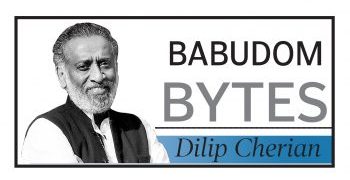Dr Guru Prasad Mohanta
After a night long toothache, Ashok went to the neighbourhood friendly pharmacy seeking a quick remedy. The pharmacist gave him a few painkiller tablets. Just the previous day, he read an article in the newspapers cautioning the use of painkillers as they are associated with several side effects.
Ashok is confused; whether to take them or are there safer alternatives? Yes, it is not the issue of Ashok alone. There are many of us who depend on the painkillers for maintaining routine daily activities.
Most of the painkillers belong to a group called non-steroidal anti-inflammatory drugs (NSAIDs) and are widely used to treat pain and fever from many different long and short-term medical conditions such as arthritis, menstrual cramps, headaches, colds, and the flu. NSAIDs are available by prescription and over the counter products. The USFDA, the drugs regulatory authority of the United States of America, has just issued warning: “Non-aspirin NSAIDs increase the chance of a heart attack or stroke”. There are several medicines in this group, the most common being, ibuprofen, diclofenac, acceclofenac, naproxen, piroxicam, celecoxib and indomethacin. These medicines are usually associated with gastric irritation, discomfort and sometimes gastric bleeding. In order to prevent the side effects, the medicines are advised to be taken after food and often with gastric acid reducing medicines. But the gastric acid reducing medicines are too not free of side effects. Especially the proton pump inhibitors cause serious side effects on continued use.
Ever since the voluntary withdrawal of rofecoxib (Vioxx) from international markets following several reports of cardiovascular deaths in 2004, there has been a great deal of interest on safety of NSAIDs. The present FDA warning has once again highlighted the potential risk of the pain killers. This will have far reaching consequences on use and marketing of the NSAIDs. They can increase the risk of heart attack or stroke in patients with or without heart disease or risk factors for heart disease.
However, patients with heart diseases are at higher risk. The risk increases with increasing dose and duration of treatment. The risk of heart attack or stroke can occur as early as the first weeks of using an NSAID. It further warns “Patients treated with NSAIDs following a first heart attack are more likely to die in the first year after the heart attack compared to patients who are not treated with NSAIDs after their first heart attack”.
USFDA continues to advise patients taking NSAIDs should seek medical attention immediately if they experience symptoms such as chest pain, shortness of breath or trouble breathing, weakness in one part or side of their body, or slurred speech.
There is a safer alternative. The topical form of application of NSAIDs is found to be equally effective but much safer. A recent Cochrane review (a good source of evidence based drug therapy) confirmed the effectiveness of topical non-steroidal anti-inflammatory drugs is similar to that of orally administered ones. The study compared the effects of NSAIDs in the form of gel, spray, or cream. Formulations of topical diclofenac, ibuprofen, ketoprofen, piroxicam, and indomethacin demonstrated significantly higher rates of clinical success than matching topical placebo. Gel formulations of diclofenac (as Emugel®), ibuprofen, and ketoprofen, and some diclofenac patches, provided the best effects. The adverse events reported were very minimal. Local skin reactions were mild and transient and similar to placebos. However, topical application is not always feasible.
In spite of NSAIDs’ popularity of being clinically effective in relieving pain, they are not free of side effects including potential for causing cardiovascular harms. They can kill the users. “Use NSAIDs at lowest possible dose for shortest possible time” should be the philosophy.
Dr Guru Prasad Mohanta is a professor of pharmacy at Annamalai University,
Tamil Nadu.







































